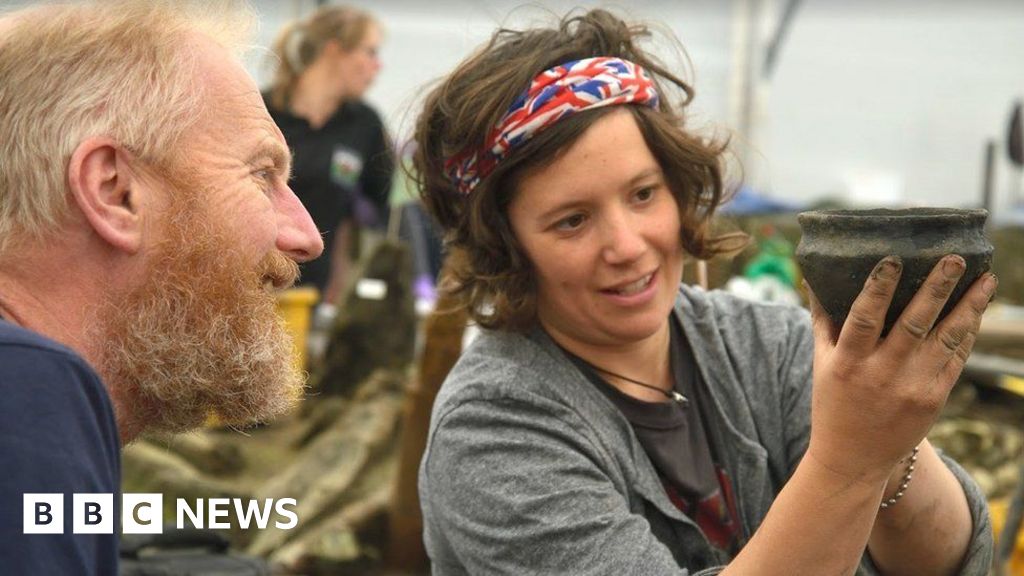- Author, Katy Prickett
- Role, BBC News, Peterborough
The discovery of a burnt-out village dubbed Britain’s Pompeii revealed “an amazing time capsule” that captured an everyday moment in late Bronze Age Britain.
The 3,000-year-old settlement at Must Farm quarry in Whittlesey, Cambridgeshire, burnt down less than a year after it was built, and a wealth of well-preserved artefacts were discovered.
The finds and some newly-made replicas will be exhibited at Peterborough Museum on Saturday.
From sophisticated technology and multi-tools to a far-flung trading network, what did this extraordinary excavation uncover?
Residents “zoned” their homes
Image source, V Herring/Cambridge Archaeological Unit
The buildings had flexible floors, constructed from woven panels, and as the sudden blaze took hold, household goods were deposited directly into the silt below, preserving them for thousands of years.
Archaeologists were able to discover the ancient residents “zoned” the internal space in their homes, comparable to the rooms we have in houses today.
In one roundhouse, complete pots and wooden containers were recovered from the northwest suggesting that was the cooking area, metal tools appeared to have been stored in its eastern corner and fine textiles and bundles of fibres were found in the southeast corner, close to the light of the entranceway, which suggested this was a good place to work on those materials.
The collection was made up of 200 wooden artefacts, more than 150 fibre and textile items, 128 pottery vessels and about 90 pieces of metalwork.
These included stackable pots and axes “a bit like a multi-tool, that you can swap in different axe heads”, said Mr Wakefield.
“I think people have this perception that everyone was struggling to survive, that it was a horrible, nasty time to be alive, and actually looking inside these structures shows they’ve got a very sophisticated level of technology, ” he said.
Infected with tapeworm
Image source, M Ledge/Department of Archaeology, Cambridge Univ
These can grow up to 10m (32ft) long and live coiled in the intestines.
Teams from Cambridge and Bristol universities used microscopy techniques to detect ancient parasite eggs within the faeces and determined whether it was from a human or dog.
The University of Cambridge’s Dr Marissa Ledger said it also appeared they shared food with their dogs, because both were infected by similar parasitic worms from eating the raw fish, amphibians and molluscs.
The research offered the first clear understanding of prehistoric Fen people’s diseases, according to the university.
‘An insight into the everyday’
Image source, Emma Jones/AncientCraft
Experimental archaeologist, Emma Jones, said: “It’s probably a reflection what a normal late Bronze Age settlement looked like, and the insight into the mundane and everyday does echo with us.
“In comparison, most archaeological findings from this era come in some sort of burial or ritual context, so relates to someone of higher status.”
She added: “In a world that’s presumed to be in browns and natural colours, because no evidence has survived of the dyeing of cloth, to see the sudden burst of colour was exciting.”

William Turner is a seasoned U.K. correspondent with a deep understanding of domestic affairs. With a passion for British politics and culture, he provides insightful analysis and comprehensive coverage of events within the United Kingdom.



:max_bytes(150000):strip_icc():focal(705x250:707x252)/zendaya-met-gala-050624-3-f9ade6233e944cb7b60ef12fb4a2064f.jpg)




